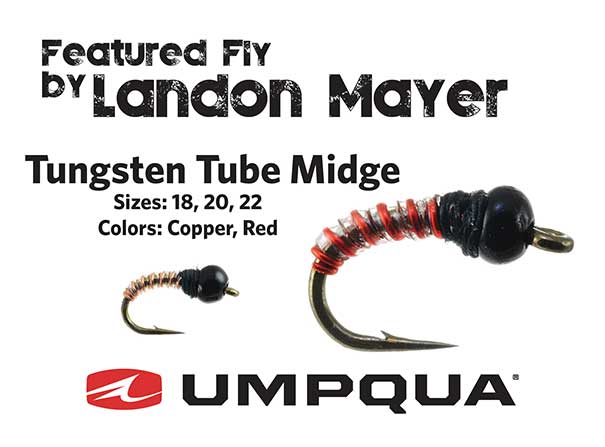Tungsten Tube Midge
As a full-time guide, you quickly realize how important segmentation and durability are in midge imitations. When you see midges in the water or pull them out of the seine, they typically appear to be mostly encased in a clear ribbed body. I matched this effect by inserting Ultra Wire into clear tubing before wrapping it on the #18/20/22 JB01 hook shank. Not only does it give the midge a clear natural appearance, the fly is also incredibly durable so that it performs well on more than one fish.


The key to this fly is that the body has no thread base. This allows it to appear transparent, with only wire and tubing holding it on the hook shank. Many ask how it stays in place. The answer is the two wraps of wire at the bend of the hook. Secured with one drop of Lactate super glue, it will hold for numerous battles. The head of the midge can be joined in numerous ways: with only thread for a slim and sleek look; with a black tungsten bead for depth control; or, my personal favorite, with white poly yarn to represent a gill tuff sticking out in front of the thread or bead.
Midging for trout can be one of the most challenging acts in fly fishing because it usually takes place in the winter months in low and clear water, or in rivers that supply cool, clear conditions. In low flows, depth control is more important than high water. This is because you need to prevent snagging the river bottom, and that is tough in the shallow riffles that provide prime feeding zones with cover, oxygen, and food supply for winter trout. My setup for these conditions is to double up on Tube Midges. The lead midge is a Tungsten bead tie to achieve depth without the use of unnatural looking split shot. The trailing fly is either a tube midge with a thread head or with a tuft that rides high so you are covering different water columns.

